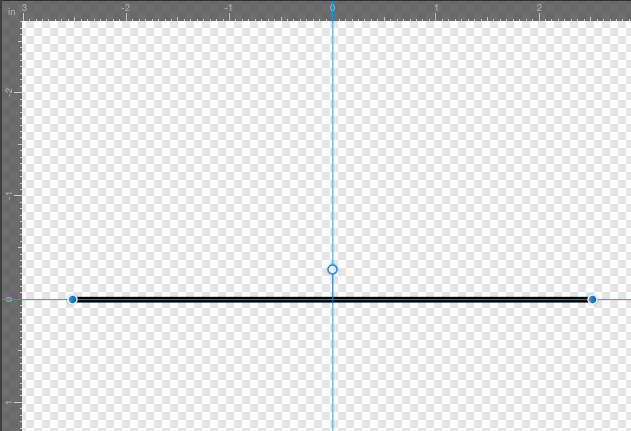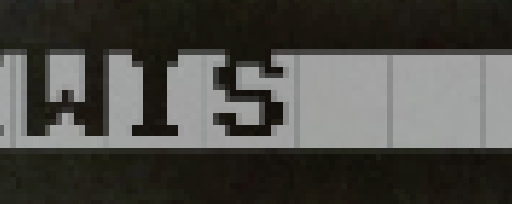
Mike Lewis
Members-
Posts
5 -
Joined
-
Last visited
Recent Profile Visitors
The recent visitors block is disabled and is not being shown to other users.
-
 Mike Lewis reacted to a post in a topic:
Find & Replace Crashes Program
Mike Lewis reacted to a post in a topic:
Find & Replace Crashes Program
-
I concede that using regular expressions would be much more efficient. Either way, unless this bug is fixed, I'll only be able to search and/or replace single characters. Not sure how useful that is. - Mike
- 7 replies
-
- find and replace
- crash
-
(and 1 more)
Tagged with:
-
MacOS 10.10.5 Affinity Publisher 1.9.3 Lots of people learned to put two spaces after the period of a sentence. My boss takes this to an extreme and sometimes puts 3, 4, even as many as 6 spaces between his sentences. (Must be a visual thing for him or something.) He doesn't care because he knows everything goes through me first to have it edited, corrected, and typeset for finished documents. First thing I do with my boss' documents is search and replace all double spaces to single spaces (and I run the search several times until no more double spaces are found.) So I'm trying to get my workflow more into Affinity Publisher and out of Adobe InDesign, and this is the first time I've tried this, so I don't know if it used to work in earlier versions of Publisher, or has never worked. I open the Find & Replace studio, and when I go to type two spaces in the Find field, the application crashes when I type the second space. Initially happened on my existing document. Tried it also on a brand new document (after making a single text box and filling it with filler text), and the same result happened. I just tried again by searching for something other than double spaces, and it appears to crash consistently whenever any second character is typed. This is with the default Find & Replace settings. Very consistent on my particular setup. Edit: Typing more than one character in the Replace field also has the same effect.
- 7 replies
-
- find and replace
- crash
-
(and 1 more)
Tagged with:
-
 Mike Lewis reacted to a post in a topic:
Transform Studio Doesn't Appear to be Affected by Relocated Ruler Origin
Mike Lewis reacted to a post in a topic:
Transform Studio Doesn't Appear to be Affected by Relocated Ruler Origin
-
Not sure if this is a bug, or if something needs to be configured that I am unaware of, but it seems to be a bug... I wanted to establish the ruler origin in an unused corner of my document to draw a figure for later use. After I located the ruler origin where I wanted, I dragged out two guides on the 0 points. Then I drew another line, but noticed that its X/Y coordinates seem to still be in reference to the artboard, not the new origin. See screen clips: Origin set kind of in the middle of this space. A vertical guide set at X=0 and a horizontal guide set at Y=0. A single stroke line placed along horizontal guide, centered on vertical guide. Centerpoint should be 0,0. What the Transform Studio actually says. If I manually type in the X/Y coordinates of 0,0, my object moves out of the visible view area and ends up in the top left corner of the artboard (which is normally 0,0 when the origin hasn't been moved.) Using Affinity Designer 1.9.1 on OS X 10.10. Thanks, - Mike
-
Not sure if this is a bug in the software, but the OCD side of me thought I'd bring it to the attention of the developers. I'm using Affinity Photo and Designer on a MacBook Pro, OS X 10.10. So I took some photos of my retro 8-bit computer system and wanted to share them with the world, with a unique byline watermark on the photo using a retro 8-bit style monospaced font which featured reverse characters. I believe the font is designed so that there is zero kerning/tracking/character spacing in order to render the text exactly like a bitmapped font from an 8-bit system. I don't know for sure if the problem lies in Photo, Designer, or both. I initially created the text layer in Designer, and then switched back to Photo to import the pictures one by one to process them individually and have the watermark placed uniformly on each export. I noticed that when I typed the text, zoomed out (to almost anything less than 100%) you can see tiny gaps between characters, but zoomed in they disappear. So I thought maybe it was just a screen rendering issue, however when I exported lower resolution versions (going from 4200 px wide down to 1920x1080), the gaps have been rendered into the flattened version of the picture. This happens regardless of the resampling algorithm used. I've included examples demonstrating this. I suppose I could manually add some negative tracking. It seems that as little as -2 ‰ tracking seems to close up these gaps in Designer, however in Photo I had to get all the way down to -14 ‰ or so before all of the gaps would visually disappear in the text on screen. This was not necessary when doing the same thing in GIMP (on a Linux machine, using the same font) or Photoshop (on the same MacBook computer where run Affinity, using the same font)—the font works as intended "out of the box" with kerning and tracking set to zero. I could be wrong, and maybe the font itself has a flaw in it. In the end, 99% of the time anyone using the software would probably not be using any kind of font that requires this degree of rendering accuracy (most fonts don't require the glyphs to be touching each other), and if they are, they could adjust the tracking as minimally necessary to achieve the desired result. Or is there some other setting I'm missing? -- Mike First picture: Gaps between monospaced reversed characters on full resolution version of image ... 36 pt font on 4200 px wide image, DPI of document is 72. Window zoom is at about 80-90%. Second picture: Gaps disappear at 100% or more zoom. I think this pic is somewhere between 500-600% zoom. Nothing has been altered otherwise. Third picture: File has been flattened and saved as a JPG at a lower pixel dimension (1920 x 1080), resampling method doesn't matter it's the same result on all, then opened back up, and zoomed in to almost 600%. The anti-alias of the gaps has been rendered into the text.
-
Well, here I sit running Adobe CS4 on my 2014 Mac running OS 10.10. Illustrator works, but only with warnings at startup, and I must be very careful about how I open and save files. (The file dialogs don't remember last location, and if I pick folder from the "Recently Used" list, 75% of the time I crash the program. Which sucks during an initial Save As...) Photoshop seems to hold up well, and I can't say I've had any problems with InDesign either. Yep, I've got some pretty great mileage out of CS4 since we bought it in early 2010. I remember learning Quark at college (and used it until about 2004), as at the time that was the industry standard... When I first tried InDesign, I wasn't so sure about it, and I wasn't impressed with importing Quark files, but I eventually got over it. My problem is that I need to upgrade my OS by demands of other unrelated software that I use. (CS4 starts breaking on 10.11, from what I've read.) At one time, the thought of getting CS6 might have been a possibility... but how long will that last me before I'm faced with the same challenge again? A year? Two? Maybe three if I'm lucky? I need to be looking forward, but a subscription model is not in the interest of my company. So, goodbye Adobe... I am an in-house designer for a company very much not in the Graphic Design industry. I like to pay for my software once and squeeze functionality out of it to the extent possible before I have to face the budget committee and ask for another upgrade—or—present all the great reasons and new features that are needed to justify it. We are faced with paying thousands of dollars for our CAD software every few years, and rightly so since that is what really makes us money around here. I'm excited to take Publisher for a spin. I had the company purchase Affinity Photo and Designer last month, and am starting to use those on a regular basis as my Photoshop and Illustrator replacements. I hope to do the same for Publisher, but it will be a tougher pill to swallow if it takes a lot of work to convert many of our company documents—currently in InDesign format—over to the Affinity format. Several of these are in-house books and manuals ranging from 60 to 200 pages. Even if the import isn't perfect (like it was back in the day from Quark to InDesign), or if I need to use some intermediary format like IDML... as long as I can get most of the styles and formatting imported, I can tweak and clean up the rest. My $0.02.





